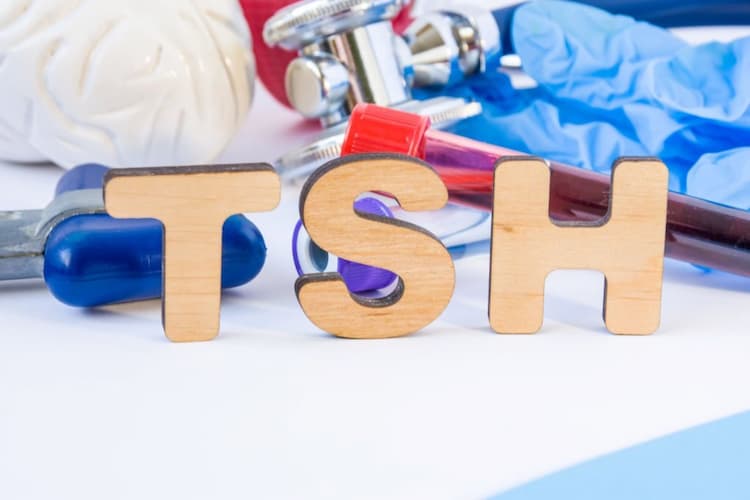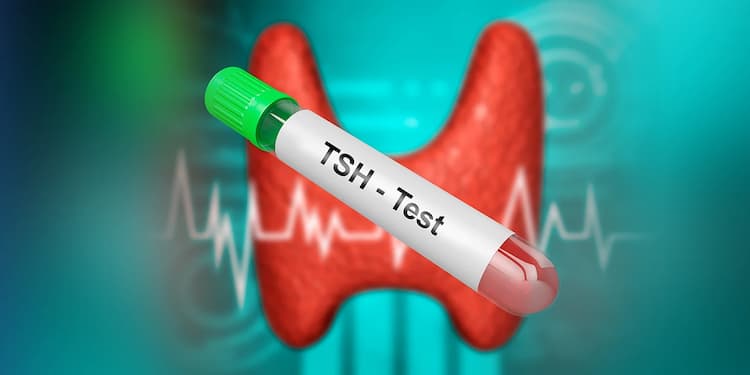Pancreatic cancer- causes, symptoms, and treatment

Medically Reviewed By
Dr. Ragiinii Sharma
Written By Prekshi Garg
on Nov 8, 2022
Last Edit Made By Prekshi Garg
on Mar 17, 2024

Although pancreatic cancer is a rare form of cancer, it is one of the leading mortality sites across the globe. Pancreatic cancer is ranked 14th in terms of incidence and 7th in terms of mortality across the world. Talking about India, pancreatic cancer is ranked 24th in terms of incidence and 18th in terms of mortality. There are around 4,58,918 new cases of pancreatic cancer, with 4,32,242 deaths across the globe. In India, there are around 10890 new cases of pancreatic cancer. The age-standardized rate (ASR) per 1,00,000 of the incidence of pancreatic cancer in males in 0.81 and females is 0.88 whereas for mortality, the ASR per 1,00,000 is 0.79 for males and 0.84 for females.
With the cases of pancreatic cancer and its mortality increasing at a considerable rate, the public must be made aware of the cancer. With the same aim in mind, let us discuss about pancreatic cancer, its causes, symptoms, and treatment in this article.
Pancreatic cancer is one of the hard-to-detect cancers and, thus, is most commonly diagnosed at an advanced stage. Thus, regular screening and proper laboratory tests are crucial for its diagnosis. Detecting pancreatic cancer at the right time can aid in effectively treating cancer. Therefore, make sure that you consult your doctor if you think you are at a greater risk of developing pancreatic cancer or have the symptoms discussed in this article.
What is pancreatic cancer?
The hockey stick-shaped small gland behind the stomach is known as the pancreas. It is actively involved in the digestion of food. Apart from this, it produces two hormones, glucagon, and insulin, that regulate the blood sugar levels in your body. Any mutations occurring in the pancreatic cells lead to their uncontrolled multiplication. This gives rise to either benign (non-cancerous) or malignant (cancerous) mass of tissue. Pancreatic cancer can be of two types depending on the gland they affect.
Exocrine pancreatic cancer
The exocrine gland in the pancreas produces enzymes that are involved in the digestion of proteins, fat, and carbohydrates. Most commonly found tumors like acinar cell carcinoma, adenocarcinomas, and cystic tumors affect the exocrine functions of the pancreatic gland.
Endocrine pancreatic cancer
The small cluster of cells called islets of Langerhans in the pancreas form the endocrine glands. The hormones insulin and glucagon are secreted by these hormones only. Since these hormones manage your blood sugar levels, any problem in these cells can lead to diabetes.
What are the causes of pancreatic cancer?
Much study still needs to be done to know the exact cause of pancreatic cancer. As we all know, that cancer is caused due to mutation in the cells. Therefore, certain modifiable and non-modifiable risk factors can make you prone to pancreatic cancer
Modifiable risk factors
These include the risk factors you can modify or change to decrease your risk of developing prostate cancer. These risk factors include:
- Cigarette smoking
- Obesity
- Lack of physical activity
- Diabetes
- Chronic pancreatitis
Non-modifiable risk factors
These include the factors about which you cannot do anything. Non-modifiable risk factors include
- Age
- Gender
- Race
- Family history
- Genetic predisposition syndromes
- Cystic fibrosis
- Pancreatic cysts
What are the symptoms of pancreatic cancer?
The diagnosis of pancreatic cancer at an early stage is very challenging as pancreatic cancer leads to no signs and symptoms during the initial stage. Also, the symptoms are so vague that it is often very difficult to diagnose it at the right stage is often very difficult. However, if you feel you have the symptoms discussed below for a long time, make sure that you consult your doctor and get screened for pancreatic cancer.
Early signs of pancreatic cancer
Pancreatic cancer does not produce any symptoms at the initial stage. However, as it progresses, you may notice some early signs and symptoms. Following are the early pancreatic cancer symptoms:
- Itchy skin
- Dark colored urine
- Loss of appetite
- Pain in the upper abdomen and back
- Vomiting
- Nausea
- Abnormal stools
- Blood clots
- Swollen gallbladder
- Diabetes
Other symptoms of pancreatic cancer
According to the American Cancer Society, the following are some of the most common symptoms of pancreatic cancer that you can easily notice.
Jaundice
One of the earliest signs of pancreatic cancer is jaundice, yellowing of the skin and eyes. Jaundice is the most common symptom of cancers that develop near the head of the pancreas and block the bile duct. This is because the yellow-brown substance, bilirubin, that is released in the liver and transported to the intestine through the bile duct for fat breakdown gets accumulated in the liver. Thus, bilirubin is not excreted out of the body with stools leading to its buildup that causes your skin and eyes to turn yellow. Dark urine, itchy skin, and light-colored stools are common signs you may notice in jaundice.
Back or belly pain
Cancer that develops in the center of the tail of the pancreas generally grows larger in size. This exerts pressure on the other nearby organs, causing pain. Apart from this, if your cancer spreads to the surrounding nerves, it can also lead to back pain.
Unintended weight loss
Poor fat digestion caused due to pancreatic cancer always gives you a feeling of fullness. This decreases your appetite and also leads to unexplained weight loss.
Digestive issues
Pancreatic cancer can lead to digestive issues like vomiting and nausea. This is generally caused because the cancer may exert pressure on the far end of the stomach and can block it partly. Thus, the food cannot pass through, leading to nausea, vomiting, and in some cases pain.
Liver or gallbladder enlargement
The accumulation of bile in the liver due to the blockage of the bile duct can enlarge your gallbladder. The spread of cancer to the liver can also lead to liver enlargement. A physical examination can diagnose gallbladder and liver enlargement as a large lump under or below the right side of the ribcage or through imaging tests.
Diabetes
Pancreatic cancer can also destroy the insulin-making cells, that is, the islets of Langerhans, causing high blood sugar or diabetes. Thus, you may experience the common symptoms of diabetes, like increased appetite, feeling thirsty, and frequent urge to urinate.
Blood clots
This is the first symptom that gives the doctor an idea about whether or not it can be pancreatic cancer. Pancreatic cancer may lead to the formation of a blood clot, more commonly in the legs. This condition is known as deep vein thrombosis or DVT. The most common symptoms of DVT include redness, swelling, pain, and warmth in the legs. If the blood clot travels to your lungs, it is called a pulmonary embolism or PE.
What is the treatment of pancreatic cancer?
There are several treatment options available for pancreatic cancer. The main aim of pancreatic cancer treatment is to relieve cancer symptoms, slow down or stop cancer growth, and completely remove the cancerous cells from your body. The proper treatment of pancreatic cancer for you depends on the stage of pancreatic cancer, its type, age, health condition, and personal choice. Following are the treatment options available for pancreatic cancer.
Pancreatic cancer surgery
If your cancer is localized to the pancreas only at the time of diagnosis, pancreas surgery can be done to eliminate the cancerous cells. This may involve the removal of teh part or the complete pancreas. The pancreas surgery can be performed by three different procedures.
Whipple procedure
- In this procedure, the surgical removal of the head of teh pancreas is done.
- The surgery may also involve the removal of teh whole of the pancreas, part of the stomach, duodenum, and lymph nodes in some cases.
- Complications
- Leakage
- Infection
- Stomach issues
- Bleeding
Distal pancreatectomy
- In this surgical procedure, a part of the pancreas, along with the spleen (in most cases) is removed.
- Removal of the spleen can put you at a higher risk of infection as the spleen is actively involved in strengthening your immune system.
Total pancreatectomy
- In this procedure, the entire pancreas and spleen are removed surgically.
- The removal of the pancreas does not affect the survival of the individual but increases their risk of developing diabetes because of the lack of production of insulin cells.
Palliative surgery
- In this surgery, a bypass is created so that the bile can flow from the liver.
- This helps relieve pancreatic cancer symptoms, like obstructions in the duodenum or bile duct, pain, and digestive issues like nausea and vomiting.
- A less invasive procedure can also be used by inserting a small stent in the bile duct with teh help of the endoscope so that the bile duct is kept open.
Embolization
- Embolization is a method wherein a substance is injected into the artery to stop the blood flow to the cancerous cells.
- Thus, lack of blood supply causes the cancerous cells to die.
- However, there are certain side effects of this procedure, like nausea, abdominal pain, infection, fever, and the risk of the development of blood clots at the site of injection.
Ablation
- In this method, heat and cold are used to destroy the cancer cells.
- The treatment option is more effective for small tumors smaller than 2.5 centimeters or 1 inch.
- The treatment is done by inserting a needle or probe into your pancreas.
- The minor side effects of this treatment include infection, pain, and internal bleeding.
Chemotherapy
- In this method, a chemical treatment is given to the body that can kill the cancer cells, thereby preventing its spread to other body parts.
- Chemotherapy can be given alone or in conjugation with other treatment
- A 2-3 weeks gap is maintained between successive chemotherapy sessions. This gives your body time to heal.
- Chemotherapy has some major side effects, like nausea, hair loss, fatigue, and vomiting.
Targeted therapy
- This method targets the substances that a cancerous cell needs to grow. This indirectly inhibits the development of cancer cells.
- This approach has specific targets and thus has lesser side effects on your body.
- Some of the most common types of targeted therapy include:
- PARP inhibitors that block PARP enzymes
- EGFR inhibitors that block the EGFR protein
- NTRK inhibitors
Immunotherapy
- This treatment method helps your body’s immune system recognize and destroy cancerous cells.
- Immunotherapy is given as an infusing every 2-3 weeks.
- Examples of immunotherapy that can be given to patients with pancreatic cancer are the PD-1 inhibitors.
- Some of the minor side effects of immunotherapy include joint pain, rash, cough, and fatigue.
Radiation therapy
- In this treatment, high-energy rays are focussed on the cancer cells to either reduce their size or remove the cells completely.
- It can also be given at a later stage to provide relief from the symptoms of pancreatic cancer or reduce the blockage.
- Radiation therapy can be given alone or in conjugation with other treatments.
- It is generally given 5 days a week.
- Radiation therapy has certain side effects that heal after completion of the treatment. These side effects include fatigue, gastrointestinal issues, and changes in the skin.
Takeaway
The cases of pancreatic cancer are increasing in our country. The late diagnosis of pancreatic cancer has made the treatment challenging. Diagnosis of pancreatic cancer at the right stage can effectively treat the condition. Thus, it is essential to spread awareness about pancreatic cancer. Now that you know about the symptoms, causes, and treatment of pancreatic cancer, ensure you get yourself screened if you are at a higher risk of developing pancreatic cancer and get it treated through suitable effective measures.
Frequently Asked Questions (FAQs)
- Do pancreatic cancer symptoms differ in males and females?
The pancreatic cancer symptoms in females and in males are usually the same. However, the severity of these symptoms in males and females may differ, and their response to the treatment can also differ.
- Can pancreatic cancer be cured?
Yes, pancreatic cancer can be cured if it is diagnosed at an early stage.
- Can I live a normal life after my pancreas is removed?
Yes, you can live a normal life after pancreas removal. However, you will need to take more care of your blood sugar levels, as removing the pancreas puts you at a higher risk of developing diabetes.
![Gluten Allergy Test - Price, Purpose, & Result [2024]](/myhealth/_next/image/?url=https%3A%2F%2Fmyhealth-redcliffelabs.redcliffelabs.com%2Fmedia%2Fblogcard-images%2FNone%2Fe94dfe46-8720-40de-854a-deedae3143d1.webp&w=750&q=75)


